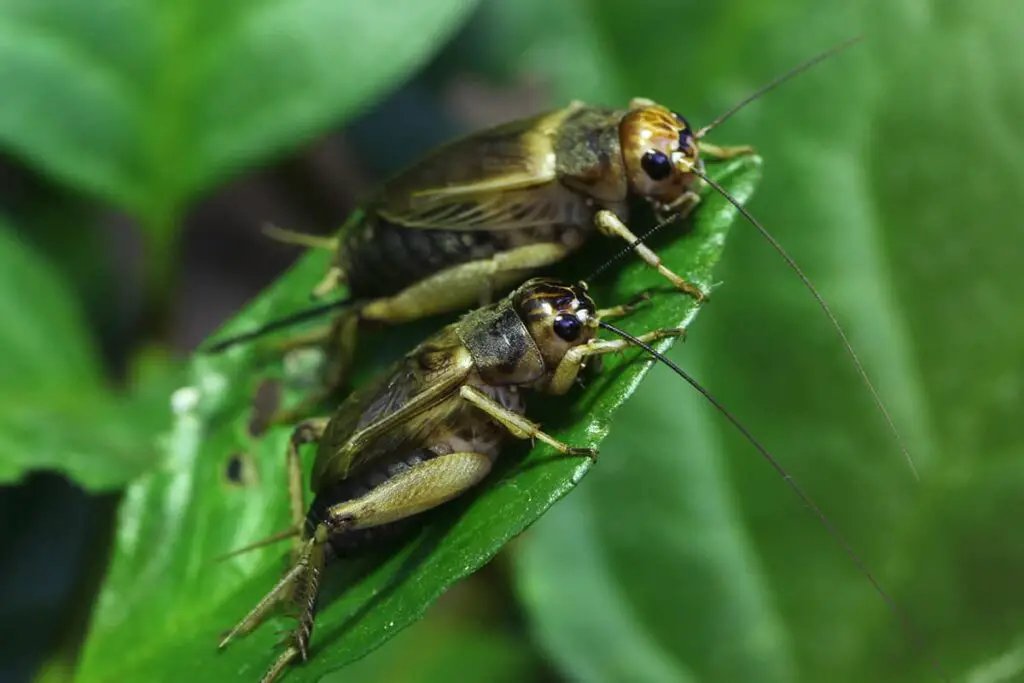Crickets are fascinating creatures, often kept as pets or used as feeder insects for various reptiles and amphibians. Keeping your crickets alive and healthy is crucial, not only for their well-being but also to provide the best nutrition for your pet or for breeding purposes. A thriving cricket habitat is marked by their active chirping and bustling movement, indicating that they are happy and in good health.
To ensure your crickets stay lively and nutritious, it’s important to provide them with the proper care and environment. This includes maintaining a clean habitat, offering a balanced diet, and ensuring they have the space they need to thrive. By observing their behavior and making adjustments to their care routine, you can keep your crickets in top condition, which is beneficial for them and any pets that rely on them as a food source.
Creating the Perfect Habitat
Creating the right habitat is crucial for your crickets’ health and longevity. It involves choosing the appropriate enclosure, controlling the environment’s temperature and humidity, and ensuring proper ventilation.
Selecting the Right Enclosure
To begin, you’ll need an enclosure that provides ample space. Aim for a tank that can hold 1 gallon per 100 crickets. This size ensures enough room for your crickets to move around, reducing stress and overcrowding. The enclosure must also have a secure lid to prevent escapes.
Maintaining Temperature and Humidity
Your crickets require a consistent environment to thrive. The ideal temperature should range from 70 to 75 degrees Fahrenheit. As for humidity, aim for a level of about 70-75%. You can monitor these conditions with a thermometer and hygrometer placed inside the enclosure. Use heating pads and moist sponges or a water dish with a sponge to adjust these parameters as necessary.
Providing Proper Ventilation
Adequate airflow is necessary to prevent moisture build-up and the growth of mold or bacteria. Ensure that your enclosure has sufficient ventilation, such as a mesh lid or air holes. However, these should be small enough to keep your crickets contained while promoting air circulation.
Nutrition and Feeding
To ensure your crickets thrive, focus on providing a balanced diet, maintaining consistent feeding routines, and incorporating essential vitamins.
Choosing the Right Diet
Your crickets require a mix of vegetables, like carrots and squash, and grains such as alfalfa and wheat germ. Adding protein sources, such as high-quality fish flakes or commercial cricket food, can support their growth and health. It’s important to avoid overripe or moldy items to prevent health issues.
Feeding Schedule and Quantities
Feeding your crickets once a day is usually sufficient, but always ensure there’s enough food to go around. If you notice food disappearing quickly, increase the amount slightly. Remove uneaten food after 24 hours to maintain cleanliness and avoid attracting pests.
Supplementing with Vitamins
To boost the nutritional value your crickets provide as feeders, consider gut loading them with a high-quality vitamin and mineral supplement 24-48 hours before offering them to your pets. This process enriches your crickets, making them a healthier food source.
General Care and Maintenance
Keeping your crickets healthy involves regular cleaning, close observation of their health and behavior, and appropriate handling. Let’s ensure your crickets thrive with the right care techniques.
Regular Cleaning Protocols
- Weekly Tank Cleaning: Empty and clean the tank once a week to prevent waste buildup and bacteria growth.
- Food and Water Dish Sanitation: Clean dishes daily to avoid mold and contaminants.
Monitoring Health and Behavior
- Observe Daily: Watch for changes in activity levels or eating habits, signs of stress or disease.
- Quarantine if Necessary: Isolate any crickets showing signs of illness to prevent it from spreading.
Handling and Interaction
- Gentle Handling: When you need to handle your crickets, do so gently to avoid causing them harm.
- Limit Handling: Crickets are best observed rather than frequently handled to minimize stress.
Frequently Asked Questions
When raising feeder crickets, ensuring their health is crucial, both for their own well-being and for the nutritional value they provide as food for your pets. These questions will guide you through the best practices for feeding, housing, and caring for your crickets.
How should I properly feed my feeder crickets to ensure their health?
To maintain healthy feeder crickets, provide a balanced diet rich in proteins, vitamins, and minerals. Incorporate fresh fruits and vegetables to keep them nutritious for your pet.
What is the ideal diet for crickets that are being fed to bearded dragons?
For bearded dragons, crickets should have a diet that includes leafy greens and grains, replicating what they would eat in the wild. Foods like collard greens and dandelion leaves are ideal for gut-loading your crickets.
What are the essential needs for maintaining crickets’ hydration?
Keep a shallow water dish in the cricket habitat and consider using water gel products to prevent drowning. Proper hydration for your crickets is essential for their survival and overall health.
Why do my feeder crickets die quickly, and how can I prevent this?
Crickets may die quickly due to poor environment quality or inadequate diet. Ensure their habitat has adequate ventilation and they’re fed a nutrient-rich diet to promote longevity.
In what ways can I create a suitable habitat to keep crickets happy and healthy?
An ideal cricket habitat should have enough space, proper ventilation, and spots for them to hide. Ensure that you house them in a tank with adequate ventilation and provide egg cartons or similar hiding places.
How long can I expect my crickets to live when kept in a controlled environment?
In a controlled environment with optimal conditions, crickets can live for several weeks to a few months. Regular maintenance and monitoring their condition is key to maximizing their lifespan.
Driven by a passion for those tiny creatures that rule our world, we at Bug Domain strive to be your go-to resource for information on insects.



